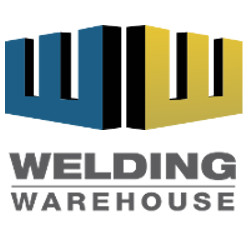DURANICKEL® 301
DURANICKEL® 301
DURANICKEL® 301 is an age-hardened alloy that combines the excellent corrosion resistance characteristics of Nickel 200 with the added advantages of greater strength and hardness. The alloy is used for springs requiring high electrical conductivity, parts of equipment requiring good thermal conductivity, and magnetostrictive units which are operated under stress conditions for which the fatigue strength of Nickel 200 is inadequate.
Corrosion Resistance
Corrosion resistance of DURANICKEL® alloy 301 is essentially the same as that of Nickel 200. In the age-hardened condition, it has excellent resistance to stress-corrosion cracking, superior to most other alloys of comparable strength. Age-hardened alloy 301 bolts proved to be very effective for use on valve bonnets and flange connections on hydrofluoric acid alkylation units. The alloy has exceptional corrosion resistance to fluoride glasses and is used for glass molds. Another proven application is for extrusion dies for plastics, particularly polyvinyl chloride.
Joining
Applications of alloy 301 seldom require welding. When welding is required, it is usually necessary for attachment of the DURANICKEL® alloy 301 to supporting members. Material should be welded in the annealed condition, and the weldment should be stress-relieved at 1500°-1600°F (815°- 870°C) for 15-30 minutes. It is important to heat the weldment rapidly to the stress-relieving range to minimize strain age cracking. Welds may be age-hardened to develop additional strength, but they will not show as much response as the base metal.
Machining
Hot-finished or as-drawn material can be machined most easily. Annealed material is not as gummy as Nickel 200 but tends to be slightly abrasive to tool cutting edges. As with Nickel 200, high-speed-steel tooling is preferred to carbide and very high positive rake angles are required. For superior surface finishes, material should be finish-machined in the age-hardened condition. Please call or email for more details on machining practices.
Specifications:
- UNS N03301
| Nominal Chemical Composition % | Melting Range | |||||||||
|---|---|---|---|---|---|---|---|---|---|---|
| Ni+Co | Cu | Fe | Mn | C | Si | S | Al | Ti | °C | °F |
| 93.0 min | 0.25 max | 0.60 max | 0.50 max | 0.30 max | 1.00 max | 0.01 max | 4.00-4.75 | 0.25-1.00 | 1400-1440 | 2550-3620 |
| Specific Heat | |
|---|---|
| Btu/lb °F | J/kg °C |
| 0.104 | 435 |
| Thermal Properties of Age Hardened DURANICKEL® 301 | ||||
|---|---|---|---|---|
| Temperature | Coefficient of Expansiona | Thermal Conductivityb | Electrical Resistivity | |
| °F | 10-6 in/in•°F | Btu•in/ft°F²•h•°F | ohm••circ mil/f | |
| 70 | – | 165 | 255 | |
| 200 | 7.2 | 176 | 280 | |
| 400 | 7.6 | 198 | 301 | |
| 600 | 7.8 | 223 | 319 | |
| 800 | 8.0 | 243 | 337 | |
| 1000 | 8.2 | 265 | 349 | |
| 1200 | 8.5 | 286 | 358 | |
| 1400 | 8.8 | 306 | 367 | |
| 1600 | 9.1 | 326 | 379 | |
| 1800 | – | 342 | 391 | |
| 2000 | – | 358 | 403 | |
| °C | µm/m•°C | W/m•°C | µΩ•m | |
| 20 | – | 23.8 | 0.424 | |
| 100 | 13.0 | 25.5 | 0.467 | |
| 200 | 13.7 | 28.3 | 0.499 | |
| 300 | 14.0 | 31.4 | 0.527 | |
| 400 | 14.3 | 34.3 | 0.554 | |
| 500 | 14.7 | 37.1 | 0.575 | |
| 600 | 15.0 | 39.8 | 0.588 | |
| 700 | 15.5 | 42.4 | 0.602 | |
| 800 | 15.8 | 45.1 | 0.617 | |
| 900 | 16.6 | 47.7 | 0.635 | |
| 1000 | – | 49.8 | 0.653 | |
| 1100 | – | 51.8 | 0.672 | |
aMean coefficient of linear expansion between 70°F (21°C) and temperature shown.
bCalculated from electrical resistivity.
